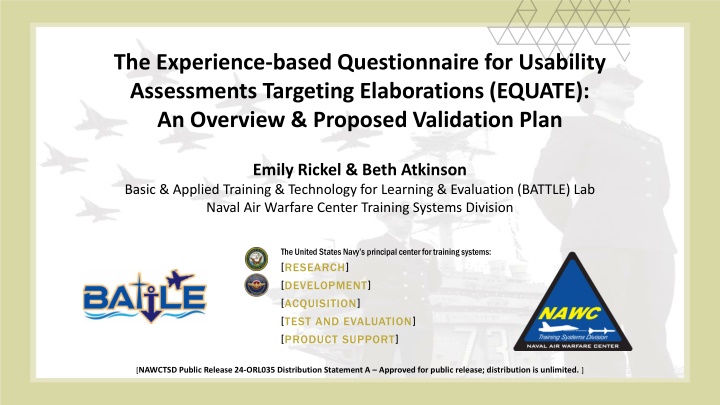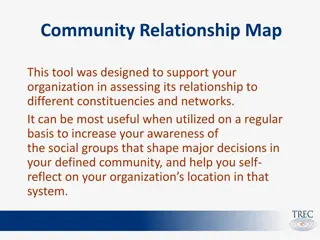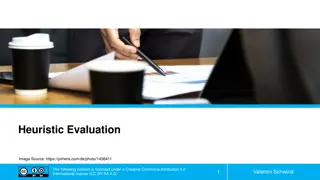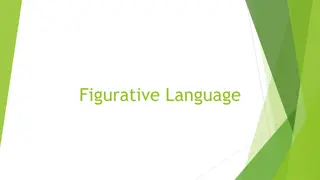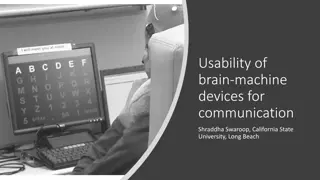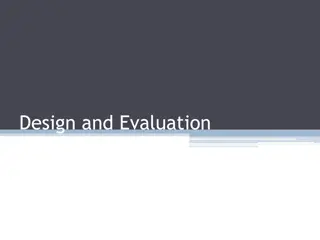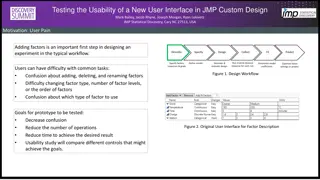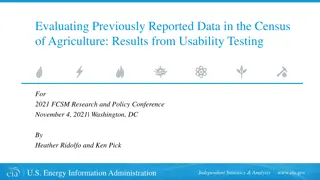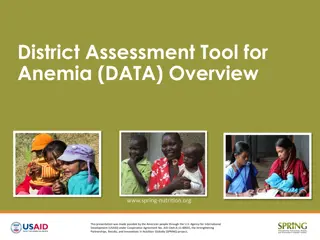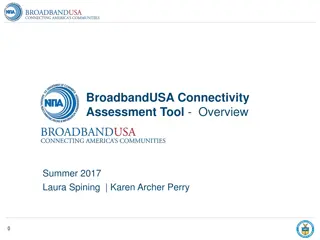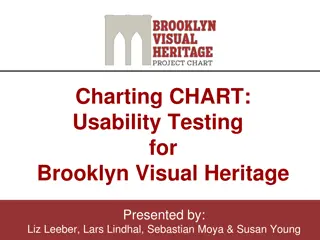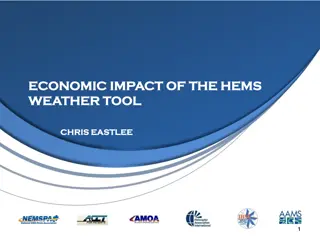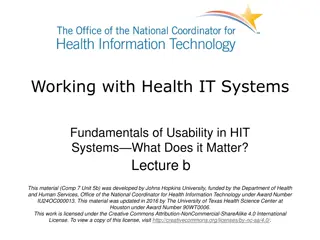EQUATE: Usability Assessment Tool Overview
EQUATE is a comprehensive usability assessment tool with a 70-item checklist covering 7 key categories. It allows evaluators to compile results, create recommendations, and provide a system overview for further improvement. Explore its history, usage, and comparisons with other methods.
Download Presentation

Please find below an Image/Link to download the presentation.
The content on the website is provided AS IS for your information and personal use only. It may not be sold, licensed, or shared on other websites without obtaining consent from the author.If you encounter any issues during the download, it is possible that the publisher has removed the file from their server.
You are allowed to download the files provided on this website for personal or commercial use, subject to the condition that they are used lawfully. All files are the property of their respective owners.
The content on the website is provided AS IS for your information and personal use only. It may not be sold, licensed, or shared on other websites without obtaining consent from the author.
E N D
Presentation Transcript
The Experience-based Questionnaire for Usability Assessments Targeting Elaborations (EQUATE): An Overview & Proposed Validation Plan Emily Rickel & Beth Atkinson Basic & Applied Training & Technology for Learning & Evaluation (BATTLE) Lab Naval Air Warfare Center Training Systems Division The United States Navy s principal center for training systems: [RESEARCH] [DEVELOPMENT] [ACQUISITION] [TEST AND EVALUATION] [PRODUCT SUPPORT] [NAWCTSD Public Release 24-ORL035 Distribution Statement A Approved for public release; distribution is unlimited. ]
EQUATE History Multiple Heuristic Evaluation Table (Atkinson, Bennett, Bahr, & Nelson, 2007) MHET UI- User Interface - Table for Evaluating & Analyzing Composite Heuristics (Atkinson, Tindall, & Kaste, 2015) TEACH Experience-based Questionnaire for Usability Assessments Targeting Elaborations (Atkinson, Tindall, & Anania 2018) EQUATE
EQUATE Overview 70-item checklist, 7 categories: Graphic Design & Aesthetics Error Handling & Feedback User Interaction Control Learnability User Efficiency Consistency Help
EQUATE Usage Compile Results & Create Prioritized List of Recommendations Provide Evaluators with System Overview Complete Evaluations Individually Select 2-4 Evaluators
Example Outputs Graphic Design & Aesthetics Interface Strength In general, interface looks clean and well-organized. Error Handling & Feedback Room for Improvement The program presented an unclear error message, 409 Conflict . Ensure all error messages describe issues and suggested solutions in user-friendly language.
EQUATE vs. Other Usability Assessment Methods Nielsen s 10 Usability Heuristics (1994) Usability Testing
Weighing Two Options for Future Validation Complete exploratory and confirmatory factor analyses (EFA/CFA) Leverage methodology outlined in Qui ones, Rusu, & Rusu (2018) Requires fewer responses Weaker method of validation Requires more responses Stronger method of validation
References Atkinson, B. F. W., Bennett, T. O., Bahr, G. S., & Nelson, M. M. W. (2007). Development of a multiple heuristics evaluation table (MHET) to support software development and usability analysis. In Universal Access in Human Computer Interaction. Coping with Diversity (pp. 563-572). Springer Berlin: Heidelberg. Atkinson, B. F. W., Tindall, M. J., & Anania, E. C. (2018). The development of a hybrid approach to usability assessment: Leveraging a heuristic guidance framework for end user feedback. Proceedings of the AHFE 2018 International Conferences on Usability & User Experience and Human Factors and Assistive Technology, 473-480. Atkinson, B. F. W., Tindall, M. J., & Kaste, K. P. (2015). Data analysis for survey development: A comparison of hierarchical cluster analysis and confirmatory factor analysis. Poster extended abstract submitted to the Human Factors & Ergonomics Society Annual Meeting. Nielsen, J. (1994). Enhancing the explanatory power of usability heuristics. Proc. ACM CHI'94 Conf. (Boston, MA, April 24-28), 152-158. Qui ones, D., Rusu, C., & Rusu, V. (2018). A methodology to develop usability/user experience heuristics. Computer Standards & Interfaces, 59, 109-129.
Quiones, Rusu, & Rusu (2018) Formal methodology for developing usability / user experience heuristics
